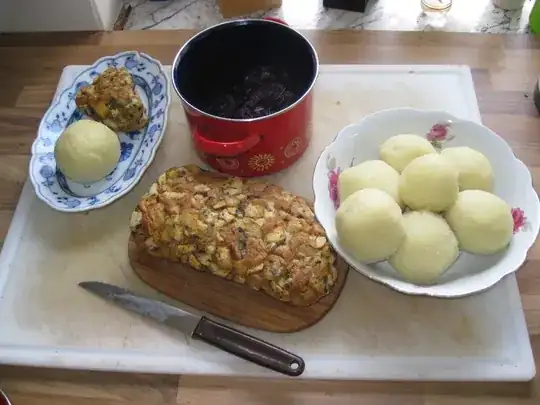When making Thuringian potato dumplings, an integral part in the process is the so-called “Schwefeln”: Sulfur that comes on threads is burnt inside the closed pot of potatoes.
Native Thuringians, if asked what the sulfur was for, will reply that sulfur dioxide prevents the dumplings from turning gray during cooking. Is there anything to back this up? Are there any possible side effects, especially wrt taste?
EDIT: Add picture showing dumplings (the bright yellow ones on the right) one day after they were prepared.
